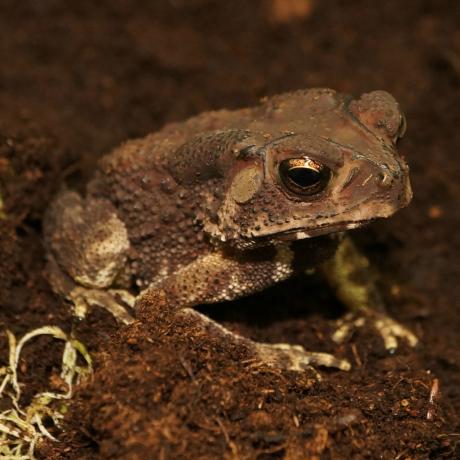

Don’t be fooled by their lack of colour; this species is both interesting and easy to care for. Also known as the Asian Black Toad.
| Origin | Southern China, India, Southeast Asia |
|---|---|
| Environment | Lowland habitats |
| Adult Size | Up to 10cm |
| Suitability | Novice keeper |
| Lifespan | 10+ years |
A highly variable species, usually recognisable by its brown to orange body and the black crests on the head. The crest, parotoids, spiny warts and dorsolateral ridges are especially prominent. Adults are typically 7-10cm in length.
The range in which this species can be found is enormous and covers most of Southern China, India and Southeast Asia in lowland habitats. Adults are terrestrial and can be found under rocks, logs and in leaf litter. They’re also common around human habitations.
We recommend housing these toads singularly in a glass terrarium of at least 18 x 18” or larger if you intend on keeping a small group together.
Temperatures should be maintained between 24-26°C (75-79°F) during the day, with a night-time temperature drop to 20°C (68°F). This can easily be achieved with a reflector dome, low wattage basking bulb and controlled by a dimming thermostat.
This species is nocturnal and doesn’t require any form of UVB lighting. However, you may wish to still provide a low output lamp and create a day/night cycle within the terrarium.
Use a hand or pump sprayer and lightly mist the enclosure twice weekly. Do not saturate the surroundings (remembering that this species is not found in closed forests). Provide a good sized water bowl for bathing and remember to treat all tap water with a good quality dechlorinator. Aim to keep humidity levels around 70%.
Use a soil based substrate, add live moss, leaf litter and items of natural decor, such as cork bark, hides and rocks. Artificial plants can be added for aesthetic purposes.
Live food of appropriate size should be offered to this species every other day. Crickets, locusts and earthworms are readily taken. Remember to dust the insects in calcium supplement at least twice weekly and vitamin and mineral supplements just once a week.